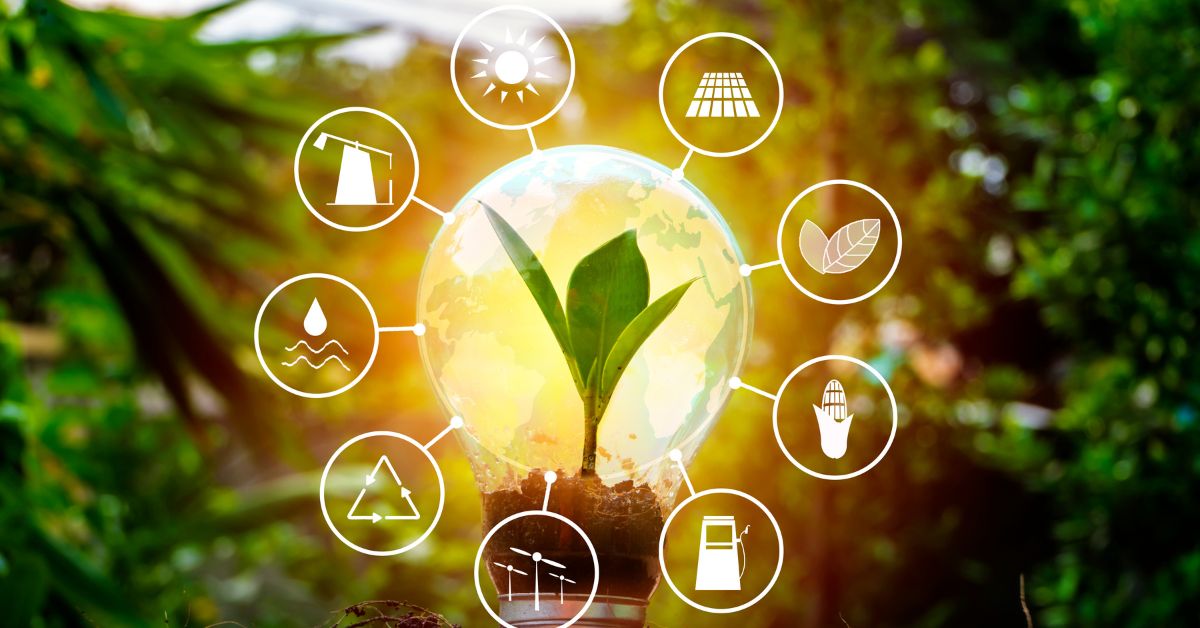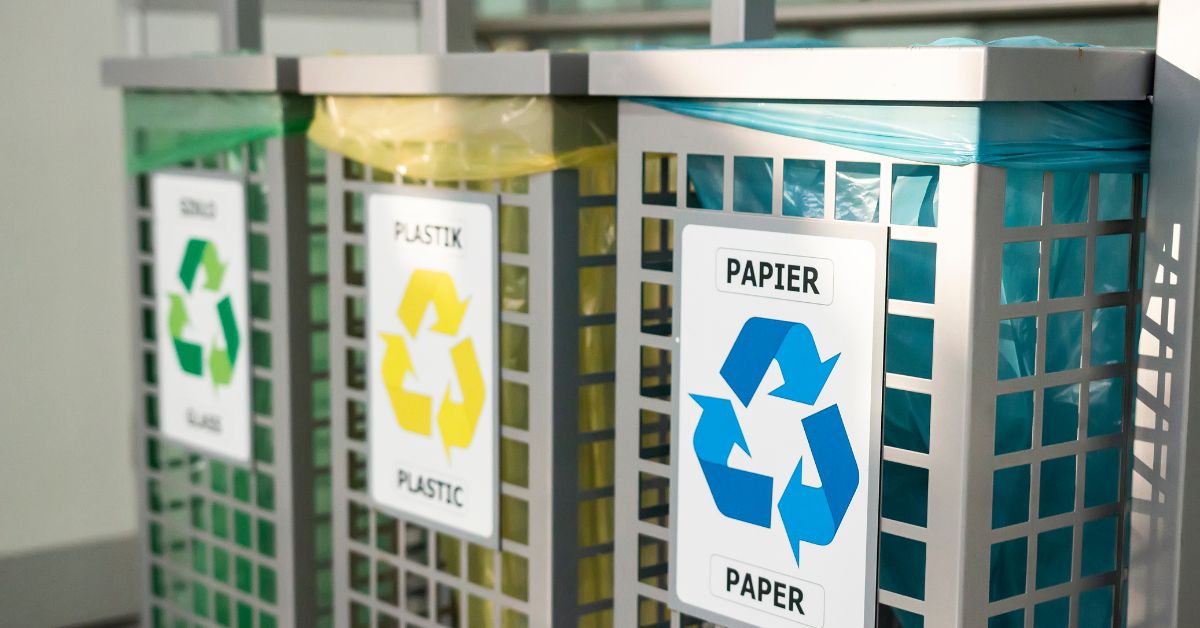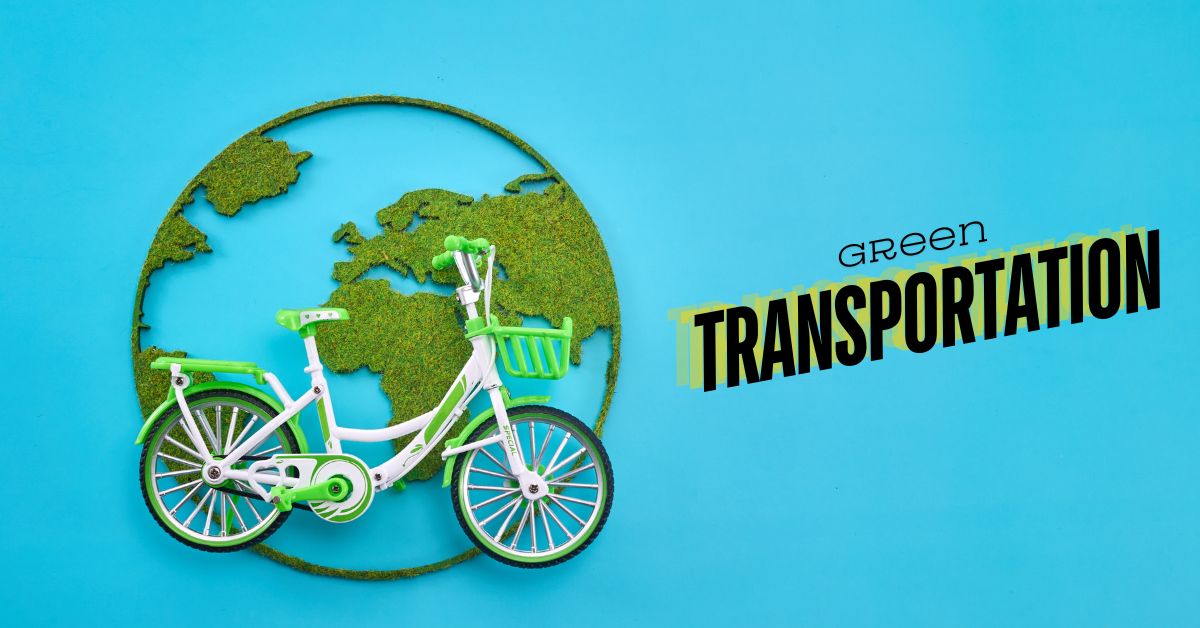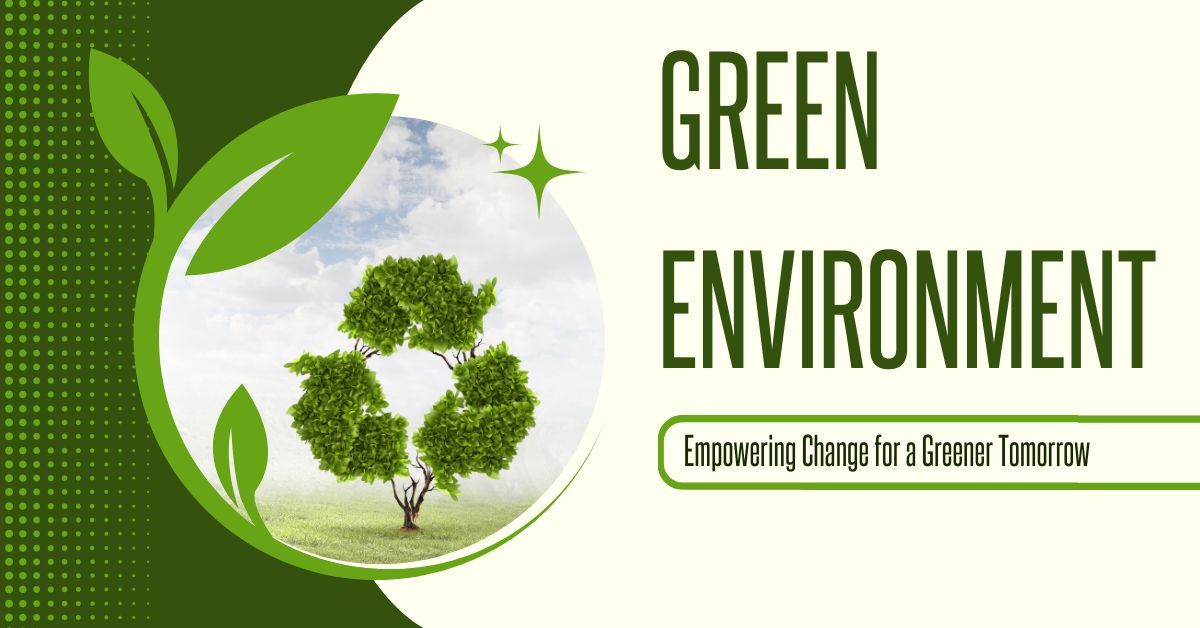Green Environment
A Green Environment is a balanced ecosystem where human activities harmonize with nature, promoting sustainability and ecological health. It emphasizes renewable energy, waste reduction, and conservation of natural resources, fostering cleaner air, water, and soil.
Preserving biodiversity and reducing carbon footprints encourages resilience against climate change. Green environments support sustainable agriculture, eco-friendly transportation, and urban planning that minimizes pollution and enhances green spaces. The goal is to create a regenerative, self-sustaining world where future generations can thrive, ensuring a balance between economic growth, social well-being, and the planet’s natural systems. It’s a blueprint for sustainable living.
Green Environment: A Sustainable Path to a Healthier Planet
Table of Contents
- Introduction
- The Importance of a Green Environment
- Environmental Impact
- Health Benefits
- Economic Benefits
- Renewable Energy Sources
- Solar Energy
- Wind Energy
- Hydropower
- Geothermal Energy
- Sustainable Agriculture
- Organic Farming
- Permaculture
- Agroforestry
- Urban Gardening
- Waste Management
- Recycling
- Composting
- Reducing Plastic Waste
- Circular Economy
- Forest Conservation
- Importance of Forests
- Deforestation: Causes and Consequences
- Reforestation and Afforestation
- Water Conservation
- Water Scarcity and Pollution
- Sustainable Water Management
- The Role of Technology in Water Conservation
- Green Transportation
- Electric Vehicles
- Public Transportation
- Cycling and Walking
- Future Trends in Transportation
- Role of Governments and Organizations
- Policy Interventions
- International Collaboration
- Role of Non-Governmental Organizations (NGOs)
- How Individuals Can Contribute
- Sustainable Living Choices
- Energy Efficiency at Home
- Responsible Consumption
- Advocacy and Community Action
- FAQs about a Green Environment
- Conclusion: A Vision for the Future
Green Environment
Introduction
The global push for environmental sustainability has never been more critical. As industrialization, urbanization, and population growth escalate, the planet faces unprecedented challenges such as climate change, pollution, resource depletion, and biodiversity loss. A “green environment” promotes ecological balance, conserves natural resources, and seeks to mitigate human activity’s negative impact on the planet. Transitioning to a green environment is a collective responsibility, requiring efforts from individuals, communities, governments, and industries.
The green environment concept emphasizes the sustainable management of natural resources, advocating for renewable energy, waste reduction, water conservation, and forest preservation. By embracing these principles, we can ensure a livable world for future generations, combat environmental degradation, and address the interconnected global issues of climate change, economic inequality, and public health.
The Importance of a Green Environment
Environmental Impact
Maintaining a green environment has far-reaching consequences for the health of our planet.
- Mitigating Climate Change: Shifting to renewable energy sources and sustainable agricultural practices reduces the carbon emissions driving global warming. Limiting greenhouse gases and preserving carbon sinks (such as forests and oceans) is crucial in stabilizing the Earth’s climate system.
- Biodiversity Conservation: Protecting natural habitats helps preserve ecosystems and species, which are vital to maintaining ecological balance. Every organism, from the smallest insect to the largest mammal, plays a unique role in the web of life. A loss in biodiversity disrupts ecosystem services such as pollination, water purification, and food security.
- Pollution Reduction: Green practices such as clean energy, sustainable farming, and responsible waste management decrease air, water, and soil pollution, which are major health hazards for humans and wildlife alike.
Health Benefits
A greener environment not only benefits ecosystems but also directly impacts human health:
- Cleaner Air: Reduced reliance on fossil fuels, especially coal and gasoline, results in lower levels of harmful air pollutants like particulate matter, nitrogen oxides, and sulfur dioxide, all of which contribute to respiratory diseases.
- Mental and Physical Well-being: Access to green spaces like parks and forests enhances mental well-being, reduces stress, and encourages physical activity, which in turn helps prevent chronic conditions like obesity, diabetes, and cardiovascular disease.
- Healthier Food: Organic and sustainable agricultural practices produce healthier food by minimizing the use of harmful chemicals like pesticides and synthetic fertilizers.
Economic Benefits
Transitioning to a green environment can also unlock economic opportunities:
- Job Creation: The renewable energy sector, including wind, solar, and geothermal industries, is rapidly expanding, creating millions of jobs worldwide. Moreover, sectors like sustainable agriculture, waste management, and green building are contributing to a new wave of economic growth.
- Long-term Savings: Energy-efficient homes and businesses can significantly reduce utility bills over time, and sustainable farming practices increase agricultural yields without degrading soil health, ensuring food security.
- Resilient Economies: Green economies are more resilient to environmental disruptions such as natural disasters, which are increasing in frequency and severity due to climate change.
Renewable Energy Sources

Solar Energy
Solar energy is one of the most abundant and cleanest renewable energy sources available. Solar panels capture sunlight and convert it into electricity, reducing dependence on fossil fuels. Innovations in solar technology have made it more accessible, affordable, and efficient. Solar energy can be used in homes, businesses, and large-scale solar farms, contributing to global decarbonization efforts.
Wind Energy
Wind energy harnesses the power of wind to generate electricity. Wind farms, which consist of multiple wind turbines, are typically located in coastal areas, open plains, or offshore locations. Wind energy is a fast-growing sector due to its low carbon footprint and potential to provide a significant share of the world’s electricity needs.
Hydropower
Hydropower generates electricity by utilizing the energy of flowing or falling water. It is a highly reliable and mature form of renewable energy, contributing to both small-scale local projects and large-scale operations. Although hydropower is renewable, its environmental impact must be carefully managed to avoid disrupting aquatic ecosystems.
Geothermal Energy
Geothermal energy utilizes the heat from within the Earth to generate electricity or heat buildings. It is a stable, continuous energy source that is not affected by weather conditions, making it a valuable component of a green energy portfolio.
Sustainable Agriculture
Organic Farming
The Organic farming was avoids the use of synthetic pesticides, fertilizers, and genetically modified organisms (GMOs). Instead, it emphasizes crop rotation, composting, and biological pest control. The Organic farming promotes soil health, reduces water pollution, and supports biodiversity.
Permaculture
Permaculture is a holistic design system that works in harmony with nature. It integrates agriculture, water management, and housing to create sustainable, self-sufficient ecosystems. By observing and mimicking natural processes, permaculture reduces waste and enhances the resilience of agricultural systems.
Agroforestry
Agroforestry involves integrating trees and shrubs into farming systems. This practice benefits the environment by improving soil health, sequestering carbon, and providing habitats for wildlife. It also diversifies income for farmers, making agricultural production more sustainable and climate-resilient.
Urban Gardening
Urban gardening refers to the practice of growing food in cities, using rooftops, balconies, and community gardens. Urban gardening not only promotes local food production and reduces transportation emissions but also fosters community involvement and food security in urban areas.
Waste Management

Recycling
Recycling involves converting waste materials like paper, glass, plastic, and metals into new products. Recycling reduces the demand for raw materials, conserves energy, and decreases greenhouse gas emissions. Communities that prioritize recycling programs help reduce the amount of waste sent to landfills and incinerators.
Composting
Composting is a natural process of recycling organic matter, such as leaves, food scraps, and manure, into a valuable soil amendment. Compost enriches soil, helps retain moisture, and reduces the need for chemical fertilizers. It also reduces the amount of organic waste sent to landfills, where it would otherwise decompose and release methane, a potent greenhouse gas.
Reducing Plastic Waste
Single-use plastics, such as straws, bags, and packaging, are major contributors to environmental pollution. Reducing plastic consumption, promoting biodegradable alternatives, and enforcing stricter regulations on plastic production and disposal are critical steps toward minimizing the environmental damage caused by plastic waste.
Circular Economy
The circular economy model emphasizes reusing, repairing, refurbishing, and recycling materials and products for as long as possible. A circular economy helps minimize waste and maximizes resource efficiency.
Forest Conservation
Importance of Forests
Forests are critical ecosystems that support biodiversity, sequester carbon, and provide resources like timber, food, and medicine. They regulate water cycles, prevent soil erosion, and act as carbon sinks, making them essential in the fight against climate change.
Deforestation: Causes and Consequences
Deforestation, often driven by agriculture, logging, and urbanization, has devastating environmental impacts. It leads to habitat loss, reduced biodiversity, and increased carbon emissions. Protecting existing forests is crucial for maintaining ecological balance and mitigating climate change.
Reforestation and Afforestation
Reforestation involves planting trees in deforested areas, while afforestation refers to planting trees in areas that have not previously been forested. Both practices help restore ecosystems, increase biodiversity, and sequester carbon, making them vital components of a green environment strategy.
Water Conservation
Water Scarcity and Pollution
Water scarcity affects millions of people globally, exacerbated by climate change, overuse, and pollution. Freshwater resources are limited, and contamination from agricultural runoff, industrial waste, and plastic pollution further reduces the availability of clean water.
Sustainable Water Management
Sustainable water management focuses on using water resources efficiently, reducing waste, and preserving water quality. This includes measures like drip irrigation, rainwater harvesting, and wastewater recycling. Effective water management is essential for ensuring future water security and protecting aquatic ecosystems.
The Role of Technology in Water Conservation
Technological advancements play a key role in water conservation. Innovations like smart irrigation systems, water-efficient appliances, and desalination technologies help optimize water use and reduce water wastage in households, agriculture, and industry.
Green Transportation

Electric Vehicles
Electric vehicles (EVs) offer a clean alternative to traditional gasoline-powered cars. EVs produce zero emissions and reduce reliance on fossil fuels. With the advancement of battery technology and expansion of charging infrastructure, electric vehicles are becoming more accessible and widely adopted.
Public Transportation
Promoting public transportation, such as buses, trains, and trams, reduces traffic congestion, air pollution, and carbon emissions. Public transit systems are key components of sustainable urban mobility, particularly when powered by renewable energy.
Cycling and Walking
Cycling and walking are eco-friendly transportation options that not only reduce emissions but also promote physical health. Many cities are investing in infrastructure, such as bike lanes and pedestrian-friendly spaces, to encourage these modes of transport.
Future Trends in Transportation
Emerging technologies such as autonomous electric vehicles, hyperloop systems, and hydrogen-powered transportation have the potential to revolutionize the future of green transportation. These innovations could significantly reduce the environmental impact of travel and logistics.
Role of Governments and Organizations
Policy Interventions
Governments play a crucial role in creating and enforcing environmental policies. Regulations on emissions, subsidies for renewable energy, and incentives for green businesses are key tools for promoting a green environment. Governments must also commit to international agreements like the Paris Agreement, which aims to limit global warming.
International Collaboration
Environmental issues are global and require international cooperation. Countries must work together to address transboundary issues like climate change, ocean pollution, and wildlife trafficking. Multilateral organizations such as the United Nations and the European Union have been instrumental in facilitating global environmental governance.
Role of Non-Governmental Organizations (NGOs)
NGOs play a vital role in advocating for environmental protection, raising awareness, and holding governments and corporations accountable. NGOs like Greenpeace, the World Wildlife Fund (WWF), and the Sierra Club have been at the forefront of campaigns to protect natural ecosystems and promote sustainability.
How Individuals Can Contribute
Sustainable Living Choices
Individuals can adopt sustainable living habits by reducing energy consumption, supporting local and organic food producers, and minimizing waste. Simple actions like using energy-efficient appliances, reducing water usage, and opting for reusable products contribute to a greener lifestyle.
Energy Efficiency at Home
Making homes more energy-efficient can significantly reduce carbon footprints. Insulating homes, installing solar panels, and using energy-efficient lighting and appliances are practical steps individuals can take to reduce their energy consumption.
Responsible Consumption
Consumers can drive change by choosing sustainable products and supporting companies that prioritize environmental responsibility. Reducing consumption of single-use plastics, avoiding fast fashion, and opting for eco-friendly products are ways individuals can make a positive impact.
Advocacy and Community Action
Individual actions can be amplified through collective efforts. Joining or supporting environmental advocacy groups, participating in community clean-ups, or starting local sustainability projects can have a significant impact. Advocacy efforts, including petitions and campaigns, can influence policy and corporate behavior.
FAQs about a Green Environment
What is a green environment?
A green environment refers to a space or ecosystem where practices prioritize sustainability, minimizing waste, and reducing pollution to protect natural resources and biodiversity.
How can individuals contribute to a green environment?
Individuals can contribute by reducing waste, recycling, conserving energy, using eco-friendly products, and supporting sustainable businesses.
Why is tree planting important for a green environment?
Trees absorb carbon dioxide, produce oxygen, and provide habitat for wildlife, thus playing a crucial role in mitigating climate change and enhancing biodiversity.
What are green buildings?
Green buildings are designed to be energy-efficient, use sustainable materials, and minimize environmental impacts through smart architecture and eco-friendly practices.
How does reducing plastic use help the environment?
Plastic takes centuries to decompose, polluting land and oceans. Reducing plastic use lowers the risk of harming wildlife and reduces fossil fuel demand.
What is the role of renewable energy in a green environment?
Renewable energy, like solar and wind, generates power without emitting harmful greenhouse gases, helping to reduce carbon footprints and combat climate change.
How does sustainable farming support a green environment?
Sustainable farming practices, such as organic farming and crop rotation, preserve soil health, reduce chemical use, and promote biodiversity.
Why is water conservation essential for a green environment?
Water conservation ensures the availability of this critical resource for future generations and reduces the energy required for water treatment and distribution.
What is the significance of a circular economy in promoting a green environment?
A circular economy reduces waste by recycling, reusing, and repurposing materials, creating a sustainable loop that minimizes resource extraction and environmental impact.
How does urban green space benefit the environment?
Urban green spaces improve air quality, reduce heat island effects, provide habitat for urban wildlife, and enhance the well-being of residents by offering natural, peaceful areas.
Conclusion: A Vision for the Future
As we look toward the future, it is clear that the challenges and opportunities we face are more interconnected than ever before. The world is undergoing rapid transformations driven by technological innovation, demographic shifts, environmental changes, and evolving social values. Our ability to navigate these transitions will shape the future of humanity and the planet itself. Thus, it is essential to articulate a vision that not only addresses immediate concerns but also fosters long-term sustainability, equity, and well-being.
The future will undoubtedly be marked by advancements in artificial intelligence, biotechnology, and renewable energy, among other fields. These innovations hold the potential to revolutionize industries, solve pressing global problems, and enhance the quality of life for millions. However, they also come with risks—such as economic displacement, ethical dilemmas, and the concentration of power in the hands of a few. A vision for the future must therefore be grounded in a commitment to ensuring that these technologies serve the broader public interest and are developed with transparency, inclusivity, and accountability.
Environmental sustainability will be one of the defining issues of the 21st century. The climate crisis, biodiversity loss, and resource depletion present existential threats that require urgent action. A future where human civilization thrives will depend on our collective ability to transition to a circular economy, adopt renewable energy sources, and implement regenerative practices that restore ecosystems. We must envision a world where economic growth is decoupled from environmental degradation and where businesses, governments, and individuals work together to protect the planet for future generations.
Equity and inclusion must also be at the heart of any future vision. As the global population grows more diverse, it is imperative that societies embrace pluralism and ensure that all individuals have access to the resources and opportunities they need to flourish. Addressing inequalities—whether they are based on race, gender, socioeconomic status, or geographic location—will not only promote social cohesion but also unlock human potential on a global scale.
Furthermore, the future will demand new approaches to governance and international cooperation. As global challenges like pandemics, climate change, and cyber threats transcend national borders, nations will need to collaborate more effectively, rethinking traditional concepts of sovereignty and security. A resilient, prosperous future will require institutions that are flexible, adaptive, and equipped to manage complexity.
In conclusion, the vision for the future must be one of innovation, sustainability, equity, and cooperation. It is a future in which humanity harnesses the power of technology responsibly, stewards the Earth with care, and builds societies that are inclusive and just. By working together to realize this vision, we can create a world where progress is not just measured by economic growth, but by the well-being of people and the planet. The future is not something that simply happens to us—it is something we actively shape with the decisions we make today.

